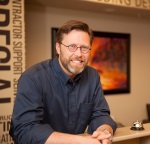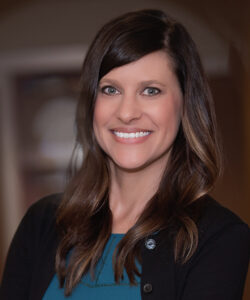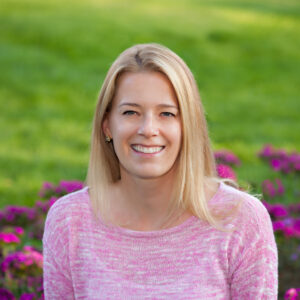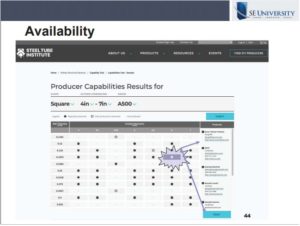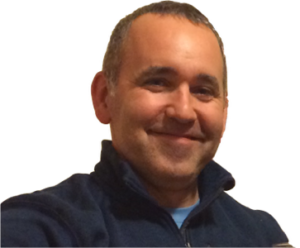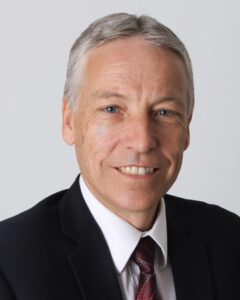In September 2020, SE University welcomed Otto Schwarz, PE, SE, from Ryan Biggs | Clark Davis, to present Concrete Mix Design. Otto designated CREATE Community Studios (https://createcommunitystudios.org/) and Institute for the Musical Arts (www.ima.org) for our SEU Speaker Inspires donations for the month.
CREATE Community Studios exists to ensure the beneficial experience of art-making be affordable and accessible to everyone. Their goal is to use expressive arts as an equalizer across cultural and economic barriers, and for participants to learn how to use art as an expressive medium to increase their general well-being.
The Institute for the Musical Arts in Goshen, MA supports women and girls in music and music-related businesses.
Otto commented, “I’ve suggested both of these local organizations for two reasons. The first is that I believe that the arts and the sciences have equal impact on our lives, and a world without either is lacking. Small, local organizations like these have the most direct and intimate impact on the surrounding communities and the individuals within them. The second is that it is these same small organizations that will have been disproportionally hit by the COVID-19 epidemic and a dollar donated here has a bigger impact than a dollar donated to an organization that has a national supporting audience. As the economy re-adjusts in response to times like these, it is often the arts that suffer first and the most. We should strive to ensure they survive.”
Thank you, Otto, for helping structural engineers with your SE University session, and for your designation of CREATE Community Studios and Institute for the Musical Arts as our SEU Speaker Inspires Organizations of the Month!
SE University began the SEU Speaker Inspires program in 2015 as a way to “pay it forward”, enabling our speakers to designate a charity/organization of their choice for SE University to make a donation to help improve our world.
In August 2020, SE University welcomed Jamie Piercy, from PCIA, to present 7 Deadly Email Sins. Jamie designated Frontline Foods (https://www.frontlinefoods.org/) for our SEU Speaker Inspires donation for the month.
Jamie shared, “In these trying times, our frontline essential workers have worked endlessly supporting our nation through this crisis. These brave individuals are the key to keeping our loved ones healthy. Any piece we can give back as a thank you is so important to me!”
Thank you, Jamie, for helping structural engineers with your SE University session, and for your designation of Frontline Foods as our SEU Speaker Inspires Organization of the Month!
SE University began the SEU Speaker Inspires program in 2015 as a way to “pay it forward”, enabling our speakers to designate a charity/organization of their choice for SE University to make a donation to help improve our world.
21 Sep 2020
Conflict Resolution in the Workplace
Whether you are starting a new job, or have been at the same workplace for many years, conflicts are bound to arise when working in collaboration with other. How we respond to conflicts can influence our job satisfaction, career progression, and affect our reputation within an organization.
I recently found some good tips for managing conflicts in the workplace at Engineering Management Institute’s blog post How to Overcome Conflict with Your Fellow Engineers at Work. The author, Nader Mowlaee, suggests 3 tips to avoid or eliminate workplace disagreements. Click here to learn more about How to Overcome Conflict with Your Fellow Engineers at Work.
Conflict is inevitable but having the right mindset going in can be a game changer. Learning new ways to prevent, confront, and overcome conflicts will certainly be an asset when those disagreements arise.
In July 2020, SE University welcomed Kim Olson, PE, from Steel Tube Institute, to present What Your Fabricator Wishes You Knew About HSS. Kim designated AfterHours Denver (https://afterhoursdenver.org/) for our SEU Speaker Inspires donation for the month.
Kim shared, “AfterHours Denver hands out over 400 lunches, water, socks and communion to the hungry and hurting every week in the park downtown. The smiles on the faces of the people we serve fills my cup while filling their bellies.”
Thank you, Kim, for helping structural engineers with your SE University session, and for your designation of AfterHours Denver as our SEU Speaker Inspires Organization of the Month!
SE University began the SEU Speaker Inspires program in 2015 as a way to “pay it forward”, enabling our speakers to designate a charity/organization of their choice for SE University to make a donation to help improve our world.
28 Aug 2020
Time Management Tips for a Better Life
We’ve all been guilty of feeling like there is not enough time in the day to accomplish all the tasks that life throws at us. But the truth is, we have the same amount of time as everyone else! How do some people manage to accomplish more in their day than the rest of us? If you are like me, I often considered time management to only apply to being on-time and prepared for each of my daily tasks, but the truth is that successful people use time management skills to increase the quality and scope of their life, both at work and at home.
I recently came across a podcast from Craig Jarrow at Time Management Ninja which outlines 10 Small Tips for Big Results in Your Life. They include:
- Catch Up Each Day
- Read for 20 Minutes Each Day
- Work Out
- Learn a New Skill
- Meditate for 10 Minutes
- Keep a Journal
- Always Be Cleaning
- Turn Off the News
- Get Up Earlier
- Start a New Habit
While you may not be able to include all of these tips into your daily regime, Craig Jarrow stressed the importance of consistency in the changes you do make in your life. I particularly identified areas that I need to improve my time management, and that includes eliminating wasted time mindlessly reading the daily news cycle, and also striving to learn some new skills.
By focusing on two small changes, I can be more likely to be consistent in making them a part of my daily routine. Craig offered tips and ways to implement these changes, so head over to his podcast at Time Management Ninja to learn more about how small changes can lead to a big impact in your life.
27 Aug 2020
Finding the Right Size HSS
How can you determine if a specific HSS section is commonly available? Young engineers in particular may not know which sections are most commonly used in their region, and architects often require specific sizes in their drawings for architecturally exposed structural steel. How can engineers avoid the back and forth with contractors who can’t source the sizes shown on the drawings?
In the July 2020 SE University session, Kim Olson, PE, from Steel Tube Institute, presented What Your Fabricator Wishes You Knew About HSS. Kim clarified which HSS column shear and moment connections are most economical and reviewed the information required for cost efficient delegated HSS truss connection design. She also explained tips for discerning availability of HSS shapes in the US and identified the aspects of AESS pertinent to HSS.
Specifying sizes that are readily available can save money by reducing special order items or having to redesign new sizes. STI has explored domestic producers and offers a Producer Capability Tool on their website which can help you locate and specify shapes that are readily available. Click on this link to the STI Capability Tool to locate sizes and material availability and which producers are making various sizes needed for your job.
As you can see, the STI Capability Tool can search various shape sizes and material grades, and provides results to show which shapes are regularly produced, require special order, or are not available domestically. This tool can be handy to preempt change orders and advise architects on which sizes could be used to reduce the costs of jobs using HSS shapes. Additionally, engineers can assist contractors who may have trouble locating certain sizes by providing the applicable producer. Other sizes may be available from international suppliers, however, it is more difficult to ascertain their availability and reliability.
HSS is often perceived to be more expensive than traditional wide flange sections. Engineers tend to stick with tried and true designs and may not delve into the many reasons why their HSS designs rack up big bills. Steel Tube Institute has explored the many causes of why HSS is perceived to be more expensive than wide flange shapes and has shared their findings to educate engineers on creating more efficient designs with HSS.
In the July 2020 SE University session, Kim Olson, PE, from Steel Tube Institute, presented What Your Fabricator Wishes You Knew About HSS. Kim offered several valuable tips during her presentation which can really have an impact on the cost of HSS fabrication.
Tip #1: HSS trusses designed to be the lightest possible do not equate to the lowest cost.
Fabrication costs tend to drive up the prices of trusses when the connections become excessive or not well planned. The goal should be to achieve a structure without stiffeners or reinforcement. Specifying stocky chords and thin branches can reduce connection costs, and using fillet welds designed to resist only the applied loads rather than developing the strength of the member should also be considered. Also, gapped K connections should always be used when possible since overlapped connections, although stronger, are also more difficult to fabricate which drives up the cost of the truss. Lastly, matched connections should also be avoided when stepped connections can be used. For instance, web members should be more narrow than the chord members so that the webs can be welded to the flat portion of the chord.
Tip #2: Round HSS should be avoided when rectangular or square shapes can be used.
Round HSS is typically more difficult and costly to store and handle in a fabrication shop. It often proves challenging to layout and find centerlines and proper orientations. When used in trusses, the ends of round HSS would need to be profile cut which is more costly, as well.
Tip #3: Avoid CJP welds. No Really… Don’t use them!
When fillet welds become too large, another option should be PJP welds. When PJP welds cannot resist the required forces, increasing the member thickness should be explored before considering CJP welds. CJP welds take much more time to complete, add costs to the owner for additional ultrasonic testing, and un-backed CJP welds require additional weld certification which make finding qualified welders more difficult.
Tip #4: Avoid through-bolted connections when possible.
Manually drilling the holes for a though-bolted connection can increase costs as well. Through bolts can end up being very long which could result in a special order bolt or it may not be available at all. Through bolts cannot be pre-tensioned unless the tube is reinforced, and reinforcing the tube can be costly. Through bolts are also difficult to install in the field, even in the best of conditions.
Being aware of these small but significant changes in your HSS designs can make an impact in the overall cost of a project. Engineers can help guide architects on which truss profiles might be more efficient, and which shapes could be changed to reduce fabrication costs. Being mindful of selecting HSS thicknesses which allow for less expensive welds can also make the design more efficient.
In April 2020, SE University welcomed Sam Rubenzer, PE, SE, from FORSE Consulting, to present Masonry Checklist: Reviewing Structural Drawings. Sam designated JPII Healing Center (https://jpiihealingcenter.org/) for our SEU Speaker Inspires donation for the month.
Sam shared, “JPII Healing Center brings teaching, healing and equipping to bring transformation to the heart of the Christ’s church. JPII transforms lives helping people set the world on fire with the love of God.”
Thank you, Sam, for helping structural engineers with your SE University session, and for your designation of JPII Healing Center as our SEU Speaker Inspires Organization of the Month!
SE University began the SEU Speaker Inspires program in 2015 as a way to “pay it forward”, enabling our speakers to designate a charity/organization of their choice for SE University to make a donation to help improve our world.
14 Jul 2020
Workflow for AISC Design Guide 11 Methodology for Vibration in Areas with Sensitive Equipment
Designing steel framed floors for vibration sensitive equipment can be a challenge if you have little experience with the various tolerance limits provided by equipment manufacturers. Have you ever wondered what to make of the various peak acceleration limits or generic velocity limits listed for a microscope or MRI machine? Is the design approach the same for a surgical suite as it is for a laboratory? And how does the presence of human activity affect your design approach?
In the June 2020 SE University session, Brad Davis presented Steel Framed Floor Design for Vibration Sensitive Equipment. Brad described the various response metrics used to characterize floor vibrations for sensitive equipment applications. He also reviewed the various forms of tolerance limits for sensitive equipment and showed how to apply the vibration evaluation methodology in Chapter 6 of AISC’s Design Guide 11: Vibrations of Steel-Framed Structural Systems Due to Human Activity (2nd edition) which he co-authored.
Brad helped delineate a workflow for evaluating the floor framing to compare the tolerance limits to those of the predicted response. The first step is determining the tolerance limit of the equipment and matching form of the response. This could include a peak acceleration specific limit which would be used to predict a waveform peak acceleration, or it could be a generic velocity limit which would lead to predict a one third octave spectral velocity. This information can sometimes be found in the equipment specifications, but communication with the supplier may need to be established to clarify specs which can often be ambiguous. Once the tolerance limits are established, you would next define the analysis cases which apply to the scenario. You may have a bay that supports both a laboratory and an adjacent corridor which will dictate the type of activity level considered in the analysis. The typical brisk walking pattern in the corridor will be different than the walking speed in the lab. This will lead to the next step which is selecting the walking speed category for each analysis case. In the previous example, a fast walking speed would be selected for the corridor, while the walking speed in the laboratory would most likely be very slow if only short pathways exist, or maybe slow walking if the room is more open.
Next, characterize the structure by determining its natural frequency, fn, the effective weight, W, and damping ratio, β. Many of these parameters are found in Chapters 3 and 4 of the design guide. Using these parameters, determine the response assuming the equipment and walker at midbay. Then, scale the response based on the actual location of the equipment and walker location. The response may need to be scaled twice if both the walker and the equipment are located away from midbay. Chapter 6 includes the equations needed to calculate the response and scale it, as needed.
Finally, you can compare the given tolerance limit to the predicted response to determine if the framing can successfully support the vibration sensitive equipment. Brad noted that design aids are included in the design guide and can be used to simplify this procedure. For more information and examples problems for steel framed floors supporting vibration sensitive equipment, refer to AISC’s Design Guide 11: Vibrations of Steel-Framed Structural Systems Due to Human Activity (2nd edition).
In May 2020, SE University welcomed Allen Adams, PE, SE, from Bentley Systems, Inc. / RAM, to present 2020 Practical Strategies for the Modeling and Analysis of Diaphragms. Allen designated Operation HOPE – North County (https://www.operationhopeshelter.org/) for our SEU Speaker Inspires donation for the month.
The mission of Operation HOPE – North County is to provide a safe and supporting environment for families with children and single women who are experiencing homelessness as they rebuild their lives.
Allen shared, “Over the years I have had the privilege of seeing their good work, having worked on service projects with the Boy Scouts and through church that benefitted that organization. They provide a much needed service for a vulnerable group of people.”
Thank you, Allen, for helping structural engineers with your SE University session, and for your designation of Operation HOPE – North County as our SEU Speaker Inspires Organization of the Month!
SE University began the SEU Speaker Inspires program in 2015 as a way to “pay it forward”, enabling our speakers to designate a charity/organization of their choice for SE University to make a donation to help improve our world.

